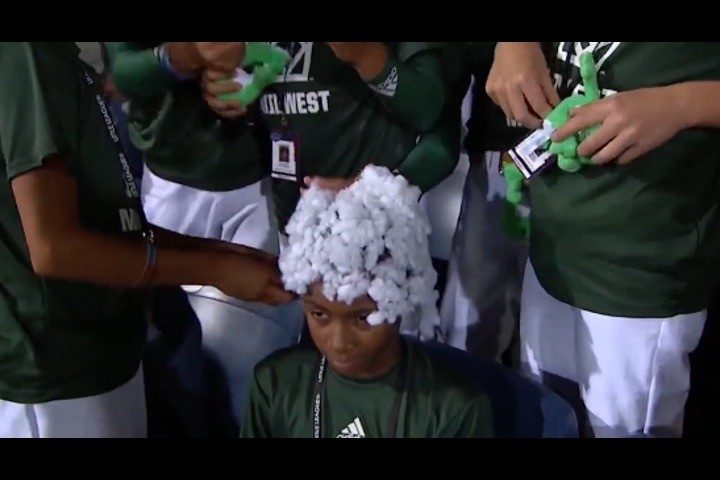
A person may think that after media organs had to pay huge settlements to Covington Catholic student Nick Sandmann for defamation, reporters might be more careful about smearing non-famous people as racists. Or you may suppose that after the Jussie Smollett hoax and the foot-noose and fancy free Bubba Wallace incident, the press might realize that hate-crime claims are just a bit more reliable than Elvis sightings.
But you’d be wrong.
Nothing has changed, and the latest example involves a recent Brigham Young University (BYU) volleyball game. It comes on the heels, too, of the media smearing 12-year-olds at the Little League World series.
The BYU racial “incident” is being taken so seriously that the South Carolina Gamecocks women’s basketball team has canceled its home-and-home series with BYU. The problem?
It appears there was no racial incident (except for the false claim of one).
As the Washington Examiner reports, the episode “involved black volleyball players from Duke University. Some of these players claimed that several members of the BYU student cheering section were hurling racist epithets and slurs. Specifically, Duke’s Rachel Richardson claimed she heard such insults when she stepped back to serve.”
The Examiner states that CNN (which had to give Sandmann a huge payoff), ESPN, The Atlantic, NPR, and ABC’s Good Morning America lent the accusation credence despite lacking corroboration. Now here’s the rest of the story, again from the Examiner:
Shortly after the story broke, however, both the BYU student newspaper and the Salt Lake Tribune said they could not verify important details of Richardson’s story.
Campus police who looked into the incident could not verify any eyewitness accounts of the harassment Richardson spoke of. The BYU student newspaper spoke to several on-the-record witnesses who stated that they neither heard nor saw anyone screaming slurs at any time. Furthermore, when Richardson pointed out an individual believed to be the person committing the act, that person was then escorted off the premises and permanently banned from any future sporting events on campus. The only problem is surveillance video at the time Richardson claims she heard the slurs shows that this individual was not in their seat.
All of these details appeared in law enforcement incident reports, the student newspaper, and the Salt Lake Tribune.
Moreover, as is sometimes said on the Internet, “If there’s no video, it didn’t happen.” In other words, video devices’ ubiquity make it unfathomable that such a thing could occur without someone recording at least part of it. So while the incident could have happened, if the Examiner is correct, there simply is no proof.
The second incident occurred about two weeks ago at the Little League World Series (LLWS). Now, understand that the LLWS, held every summer in Williamsport, Pennsylvania, is one of the more innocent, pure sporting events. The boys are generally 12 years old, are of course unpaid, and often play for the love of the game.
Well, one day during the event — on Sunday, August 21 — kids on the Davenport Southeast Little League (Iowa) team began goofing around and, driven by a desire to imitate a little leaguer whose white hairdo gained him fame, began putting white filling from a stuffed animal on each other’s head. This was done, mind you, to at least one white and one black kid (and perhaps more), and by both white and black kids. But here’s a representative example of much of the media coverage:
“Black Player Covered In Cotton By White Teammates At Little League World Series.”
What started this was a short video (below) shown by ESPN of only a black child getting the material put in his hair:
The Daily Mail picked up the story and, propagandizing to the hilt, said that the black child “looks furious in the video.” In reality, he could be seen later on in a not-well-publicized clip smiling and proudly showing off his faux white hairdo to the crowd.
But the responses under the above twitter video reveal well the mob mentality that once led to lynching (and why due process is a must). One poster wrote, “White children have been socialized by their parents, and their community, to view Black children as objects to be objectified.”
Then some commentator named Darren Haynes, shown in the video here, said, “I believe the kids were not trying to be racist — they just didn’t know what they were doing was racist.” Haynes claimed the kids needed to be taught better, but he’s the one who needs to learn here.
Little League officials investigated, talked to the black child’s mother, and discovered the obvious: There was no ill intent. (The stuffed-animal material wasn’t even cotton, to be precise, according to this source.)
A clip of a white player with the same white hairdo is seen here, and the video below does a good job of explaining matters:
Much as how people will say, when someone reads salaciousness into an innocent comment, “You have a dirty mind,” the world’s Darren Hayneses have dirty racial minds. They’re trying to foist their own hang-ups onto children while judging the kids through their own prejudiced lens.
As for ESPN, some believe the station was malicious. “Funny how they just happened to pick the team from Iowa to be outraged over after they [that team] complained about ESPN and the umpire the other day,” wrote a commenter under the above video (story here).
Whether or not that was the motivation, ESPN and the other race-baiting networks are far from innocent. Media have a duty to seek Truth — not just headlines — and should show due diligence before making claims. That they don’t is damnable. Yet their warped judgment, a function of dislocation from reality, is also a factor.
The Washington Examiner laments that this race-baiting continues because there are no consequences for this journalistic malpractice. Yet just as how people may get the government they deserve, they also tend to get the media they deserve. Until Americans start tuning out fake-news organs and instead tune in to The New American and other honest media, nothing will change.


